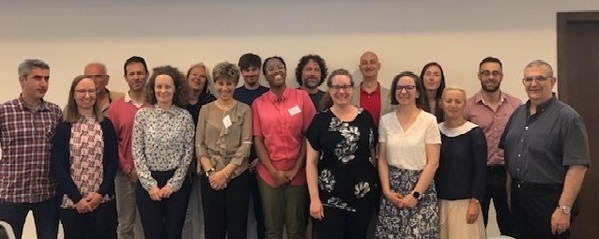
ZEROCO2 Impact
Policy change and other outputs of the Interreg Europe ZEROCO2 Project
ZEROCO2 will define Near Zero CO2 Emission Buildings due to energy use (NZCO2EB). The project will present the various benefits, which result from this type of building. It will demonstrate the combination of different technologies and energy efficiency sources. These can be used in order to achieve the set target to design state of the art policies, which will aim at promoting NZCO2EB at the local, regional and national level. ZEROCO2 will also present various financial methodologies in order to promote these types of buildings. ZEROCO2 brings together 8 partners from different European regions, with various backgrounds in order to address their common challenges and fulfil their individual and common aspired goals regarding energy efficiency.
The key issue of the project is an interregional exchange of experience and a sharing of policies and knowledge of good practices, which can be transferred according to the regional requirements and will be the base for the development of innovative and dynamic action plans. As part of these objectives, each partner, identifies the state of the energy situation of buildings, as well as the policy measures of the territories involved in the project. The interregional exchange of experience will be the source for a Good Practice Guide with best working financial tools, renewable energy technologies and energy efficient technologies in the regions involved. This guide will be developed based on the information collected during the project and will be adjusted to national policies in order to produce specific action plans with appropriate financial tools. In addition, a Market Needs Report will be created outlining possible financial mechanisms. This will encourage investments in near zero CO2 emission buildings due to energy use.
From 2016 to 2020, the Interreg Europe ZEROCO2 project defined Near Zero CO2 Emission Buildings due to energy use (NZCO2EB). The project presented various benefits, which resulted from various types of building. The original project demonstrated the combination of different technologies and energy efficiency sources. These technologies could be used to achieve the set carbon reduction targets to design tailored policies, which promoted NZCO2EB at the local, regional and national level.
ZEROCO2 also presented various financial methodologies in order to promote these types of buildings. The ZEROCO2 project has recently received additional EU funds to continue its applauded work in increasing awareness of and sharing best practices in the realm of decarbonisation technologies for buildings. The extension of ZEROCO2 shall move another step forward targeting the decarbonisation agenda, net zero 2050 policies – including the EU Green Deal – by addressing policy instruments to optimise allocated recovery funds with a focus on deep renovation of public and residential buildings.
The international consortium shall continue to work together toward promoting decarbonising building technologies. ZEROCO2 is building on the previous communication strategy in addition to maintaining the interregional learning open-source platform to allow dissemination activities that further the project’s previous and ongoing achievements and knowledge exchange to establish greater potential for an afterlife network to engage policymakers and decision makers. The extended ZEROCO2 project shall also make provision for authorities and relevant stakeholders’ opportunities to become more acquainted with and better understand what can be done with respect to zero CO2 buildings – a significant long-term goal of the European project.
€1,700,113.00
Low-carbon economy
For an additional 12 months, the extended ZEROCO2 project shall continue to make waves in the field of energy efficiency in buildings, extending beyond its original aim established in 2016 to meet the current EU targets and green deal strategies. The ZEROCO2 project is continuing to decouple economic growth from the use of resources and support the shift towards decarbonisation, the increased use of renewable energy sources and the promotion of energy efficiency – this time, on the path toward net zero carbon economy by 2050.
OBJECTIVE: The section 3 of the Energy Act (chapter 3: Energy efficiency), deals with categorization of near zero energy buildings and also with action plan for near zero energy buildings until the 2020. The action plan includes measures to achieve the objectives in this area, as well as human and financial resources that are necessary for successful implementation of program and measures. A feasibility study of alternative energy systems, which must be implemented during project preparation to grant building permit prior to the construction of the new building or in buildings that are renovated, are also defined.
CHARACTERISTIC: The Act defines a long-term strategy about how to stimulate investment in the renovation of buildings and what the priority of renovation is in terms of methodologies that are least energy efficient.
PRIORITIES: Priority is given to energy saving mainly with energy renovation of the building.
CONCERNED MEASURES: The disadvantage of this policy is that it highlights the energy efficiency of nearly zero energy buildings, measures how to achieve the goals of this type building, how to reduce energy consumption in buildings and how to renovate the buildings, but there is no policy directed NZCO2EB.
REASONS: This is a perspective area, which could make a notable input into Slovenian and EU goals. Therefore, it is crucial to define Near zero CO2 emission buildings due to energy use (NZCO2EB) at the same level as the Near energy buildings are.
OBJECTIVE: The objective of this policy instrument is to promote applications of energy saving technologies and renewable energy sources in public buildings, in order to minimize the use of conventional energy sources by them.
CHARACTERISTIC: Characteristic of this policy instrument is that it focuses on lowering the demand of energy in public buildings through energy saving and in replacing fossil fuels with renewables.
PRIORITIES: Priority is given to energy saving mainly in electricity, but also in heating and cooling. Among renewables, priority is given to those technologies cost effective in Crete, such as solar energy, solid biomass like olive kernel wood and low enthalpy geothermal energy coupled with heat pumps mainly soil to air or soil to water.
CONCERNED MEASURES: Concerned measures include firstly the decrease of electrical thermal energy in public buildings through various energy saving techniques and technologies and secondly the replacing part of the fossil fuels used in them with renewable energies.
REASONS: This policy instrument focuses in decreasing fossil fuels use in public buildings, which indirectly results in lower CO2 emissions due to energy use in them. Our project focuses directly in reducing and zeroing CO2 emissions due to energy use in public buildings which goes further than the existing policy instrument changing its priorities in a more sustainable way.
Molise Region improve and encourage the use of renewable sources within its territory, through the new Regional Operational Programme 2014-2020, with the axis 4th "SUSTAINABLE ENERGY", whose thematic objective is "Supporting the transition to a low-carbon economy in all sectors".
The achievement of this objective is pursued through the priority 4.c: "Supporting energy efficiency, intelligent energy management and renewable energy use in public infrastructure, including public buildings, and in the housing sector", specific action 4.1.
The priority is one of the pillars of the regional objectives dedicated to the sustainability of energy-intensive processes. The specificity of the event alongside the objectives of the environmental matrix, they have the task of making more efficient the cost structure of the PA, to easing the burden on citizens and businesses. The basis of the decision to include this priority is the need to contribute to the EU2020 strategy and the need to reinforce the role of the region in support of virtuous transition to a low-carbon economy.
The new programming should focus on the integration of technologies to save energy in buildings and not to simple financing energy efficiency improvements in buildings in general terms, that if outdated, do not achieve an adequate goal of sustainability.
OBJECTIVES: In the context of the project, the main relevant goals are Increase energy efficiency and production from renewable energy resources; reduction of energy consumption, saving energy resources and promotion of local resources use for buildings heating.
CHARACTERISTICS: The strategic plan is obligatory for justifying the need for structural funding. During the selection of projects for funding through the regional dimension for EU structural support, one of the project selection criteria is compliance with municipal strategic development plans.
PRIORITY: Strategic plan for 2014-2020 indicates the main priorities of the Municipality, which must be reached until 2020. The main priorities of the strategy are 1 Competitive economy; 2 High quality of life; 3 A clean and safe environment.
CONCERNED MEASURES: Seeking to implement one of the main priorities – A clean and safe environment – zero emission topic is not foreseen, but has an important role reaching changes and EU common goals. The measures are directed to the promotion of renewable energy, renovation of heating system having in mind wind, solar energy geothermal sources.
REASONS (why it should be improved): As there is no policy directed to Zero emission buildings, this perspective area, which could make a notable input into EU goals (reduction of emission) is not foreseen. As Municipality signed Covenant of Mayors it is efficient to make all possible moves reaching common targets.
OBJECTIVES: Under this priority Government will aim to increase the use of energy from RES in publicbuildings and introduce solar PV farms in areas with low environment sensitivity.
CHARACTERISTICS: Government is committed that by 2018 all new public buildings qualify as nearly zero energy buildings. This will enhance the uptake of energy efficiency and renewable energy through the approach of leading by example.
PRIORITY: Investment in RES and EE in public infrastructure, public buildings, public social housing and housing sector.
CONCERNED MEASURES: This intervention will be complemented with the retro-fitting and/or deep renovations, as appropriate, in existing public buildings. Moreover, Government will also support the installation of energy efficient systems in public buildings and in the housing sector.
REASONS: In order to sustain the competitiveness of the private sector, efforts are also required to increase energy efficiency in operations and in buildings. In this respect, investment in energy efficiency resulting in increased energy savings and reduced energy costs is necessary to support the business community to achieve cost effectiveness. This is also necessary to ensure the increased take up of green environmental practices and technologies among the private sector aiming for sustainable business practices and a cleaner environment.
The four main priorities of The Regional Strategy include guidelines for: innovative regional economy, future skill demands, wellbeing of citizens and communities, sustainable regional structure and the environment. All the objectives are interconnected and outcomes are linked to stakeholder groups. The Regional Strategy was updated at the end of 2014.
PRIORITY: Low carbon economy is a cross cutting theme in all priorities but priority 4 has the strongest link with this project. Objective 4.10, Conservation of natural resources and strengthening of energy knowledge deals with energy and buildings and increasing renewable energy and energy efficiency in the building sector.
CONCERNED MEASURES: These aim to increase the share of renewables in heating and electricity systems, and adopting new technology in intelligent refurbishment of buildings.
REASONS: The project will boost implementation of the Regional Strategy through an increase in energy advances in South Ostrobothnia where 40 % of current energy still comes from fossil fuels. The regional problem is not lack of information of energy efficient technologies and solutions but the implementation and coordination of regional and local objectives. Despite regional efforts to implement low carbon policies, stakeholder groups still need stronger cooperation. Also, there is strong need for developing indicators of change for the monitoring of the success of the objective targets.
Priority Objective 3 - Energy transition and Sustainable valuation of resources
Thematic objective: Support the transition towards a low carbon economy in all sector. Investment priority 4c: Support energy efficiency, the smart management of energy and the use of renewable energy in public infrastructure including public buildings.
The aim of this Strategic activity sector is the optimization of power production with consumer needs, in the framework of environmental protection. It is addressed first at the technological sectors involved in:
• The thermal renovation of buildings in Mediterranean climate;
• The promotion, the management and the reassurance of the intelligent electricity networks;
• The production of marine renewable energies.
The region of Provence-Alpes-Côte d'Azur contributes to 8 % of the greenhouse gas emissions of France. With a level of emission of 8,6 t eq CO2 / inhabitant in 2008, the region is per head of population, producing more greenhouse gas than the national average (8,4 t). The important industrial activity of the region, in particular the processing industries of the energy, increasing the emissions.

Policy change and other outputs of the Interreg Europe ZEROCO2 Project

This September 2022, Thermopolis Oy hosted a stakeholder event to present lessons learned and good practice examples from the Interreg Europe ZEROCO2 project.
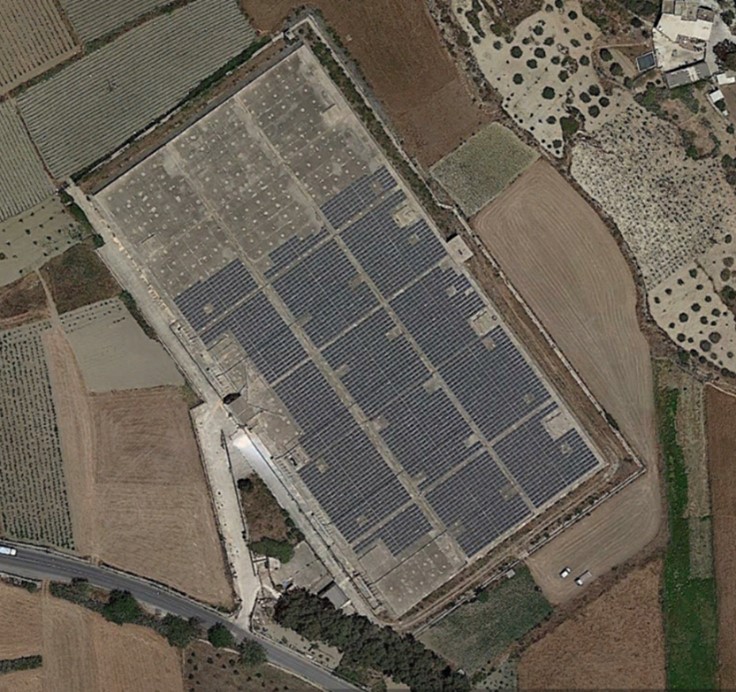
From 2016 to 2020, the Interreg Europe ZEROCO2 project defined Near Zero CO2 Emission Buildings due to energy use (NZCO2EB).
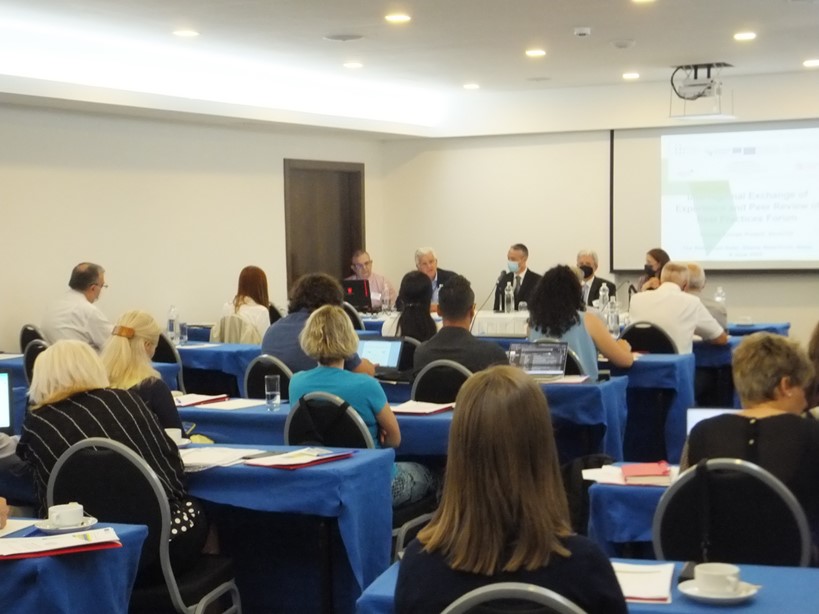
Videos from the partners of the ZEROCO2 project highlighting the good practices identified through the extended ZEROCO2 project.
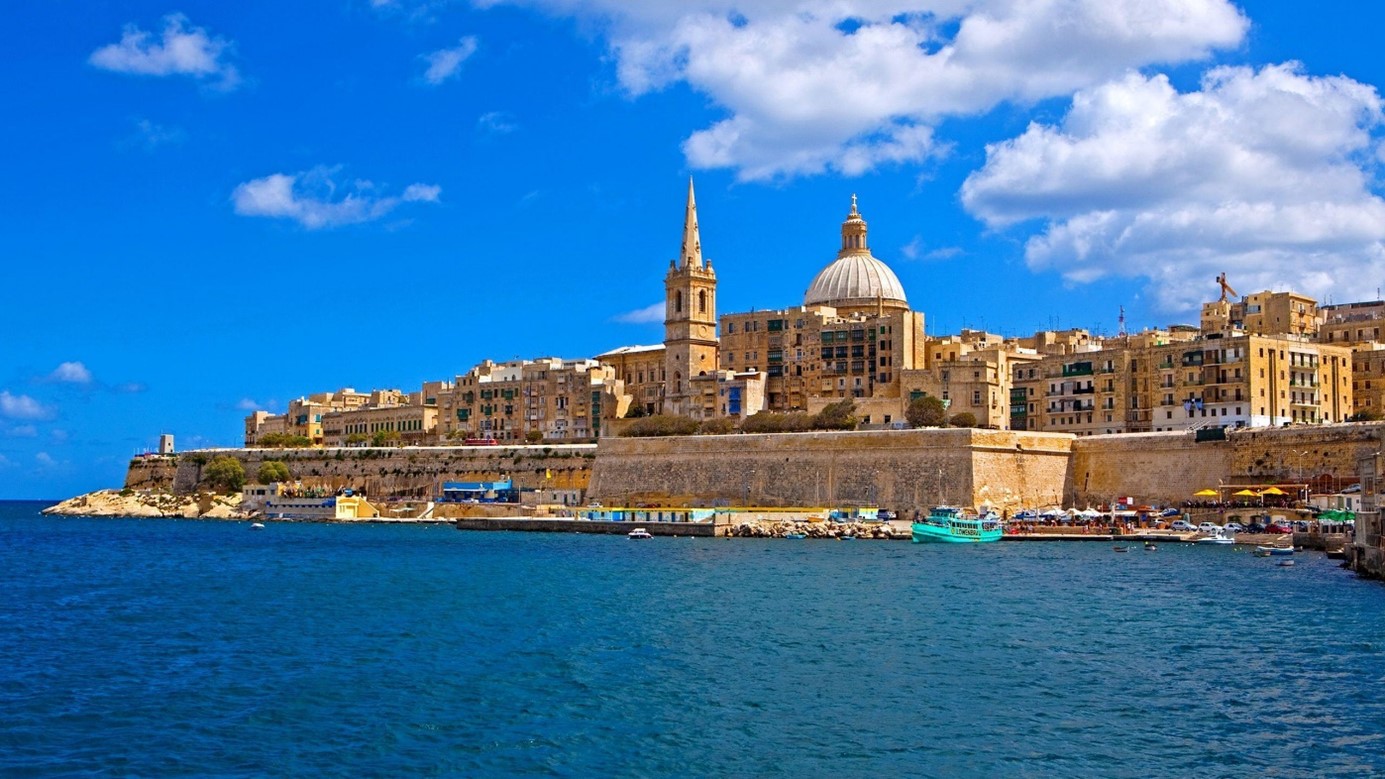
The final partner meeting of the Interreg Europe ZEROCO2 project brought together partners and stakeholders to discuss the identified good practices.
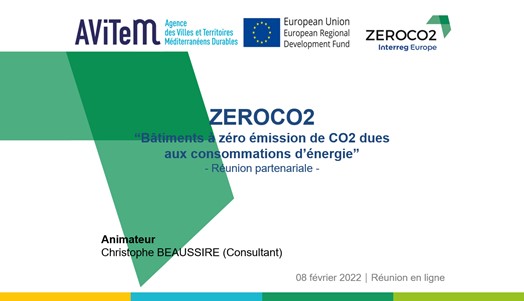
AViTeM invited the South-PACA stakeholders of the Interreg Europe ZEROCO2 project for a consultation meeting.
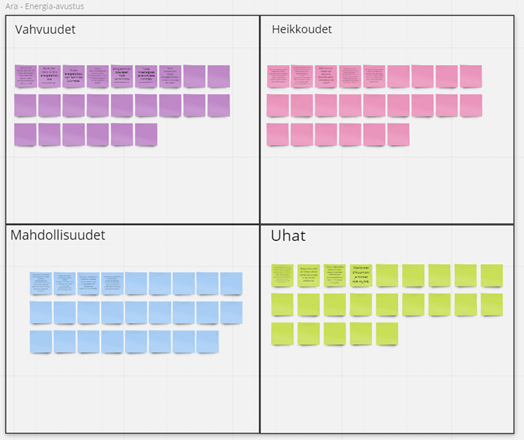
Thermopolis Oy held a virtual meeting with regional stakeholders from South-Ostrobothnia, Finland to discuss their SWOT-analysis regarding political instruments
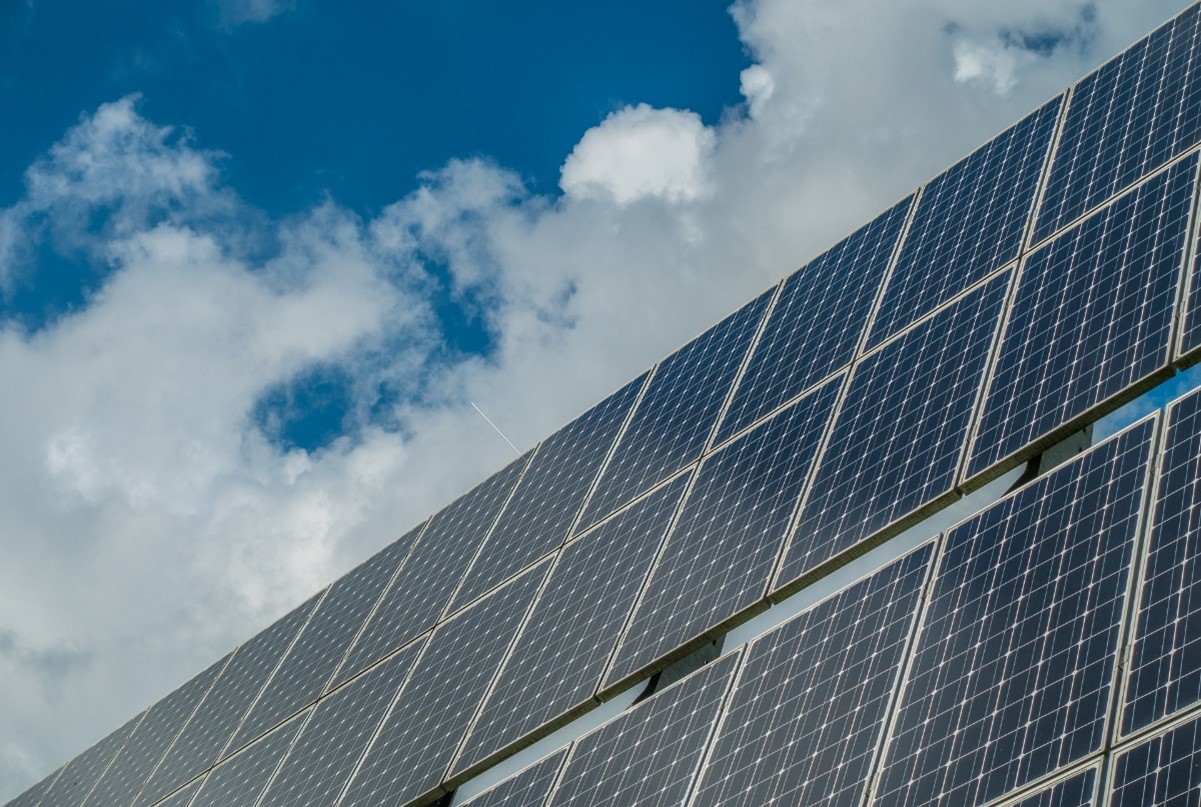
The ZEROCO2 project has recently received additional EU Interreg Europe funds to continue its applauded work in the realm of decarbonisation of buildings.

We would like to thank all the public and private stakeholders, who have participated and supported the activities of the project ZEROCO2.

Special thanks go to the Building Regulation Office and the Energy and Water Agency, as well as the Housing Authority
and the Foundation for Tomorrow’s Schools